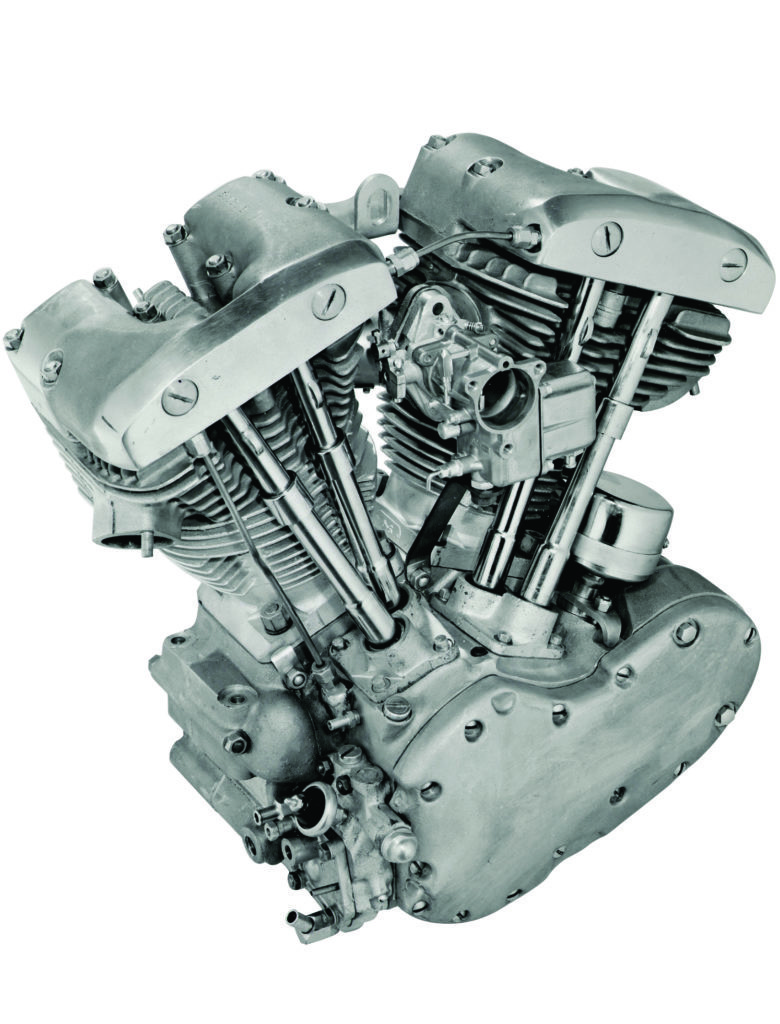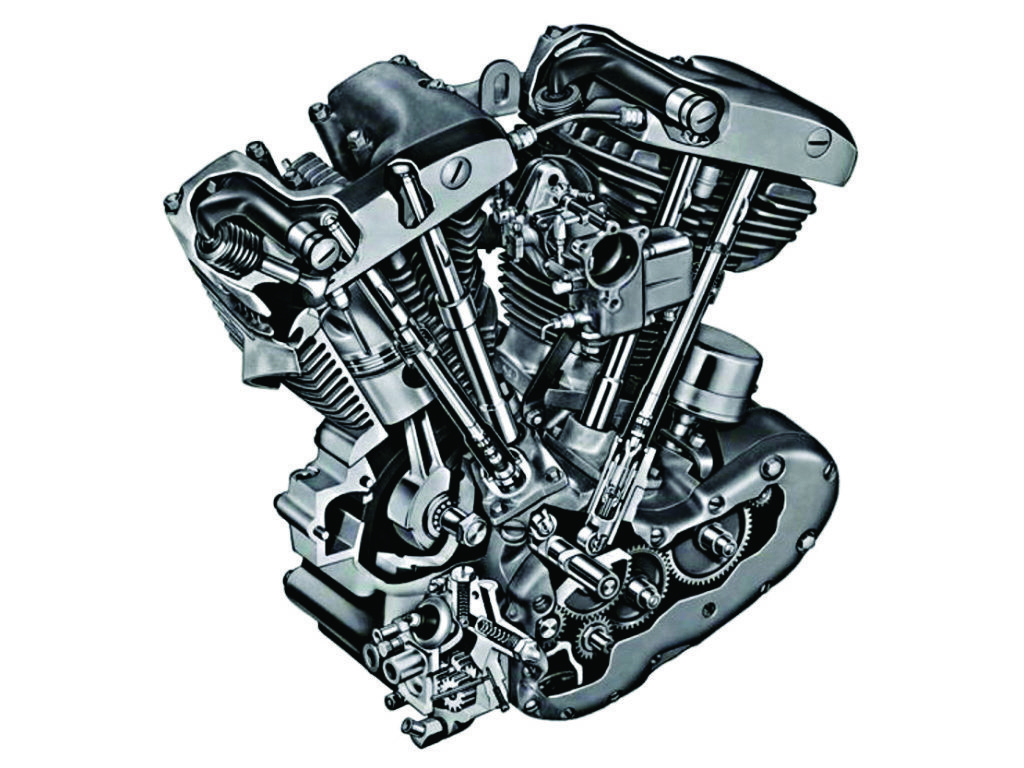The newest Harley-Davidson Shovelhead is now 35 years old. In those nearly four decades they’ve moved from cheap used sleds to collectible – or near-collectable – status, and not without reason. As we’ll see, the faults that led to the nickname ‘Troublehead’ have mostly been (or can be) sorted out over the years, as the legacy of these engines boils down to the fact that they are the last of the ‘built to be rebuilt’ Big Twins.
The trick is to ensure that they don’t have to be. So let’s start at the top:

Tame Top End
Early models have the reputation of wearing out top ends in just 20,000 miles. I’m of the opinion this had to do with sloppy OEM quality control, Do It Yourself servicing, crap ignition advance mechanisms and thick oil.
Sound, crack-free heads rebuilt with modern ‘unleaded’ seats, late-style stelite/nitrided valves and guides, valve stem seals and 8:1 (or so) hypereutectic pistons with Evo-style rings, should go 50,000 miles or more. Use 20w/50 viscosity oil and ’82 and later ‘restricted’ oil-feed sleeve nuts in the proper locations. Mild cams, quality hydraulic lifters and modern high-voltage ignition coils will help, too. Make sure gasket surfaces are flat! Shim the rocker arms to a thou or so, but only after you’re sure the boxes aren’t worn or warped.

Bulletproof Bottom End
Check stock crankcases for cracks using a dye penetrant. Use S&S (steel flywheel) cranks with Evo-type rods, double-checked to be properly trued and balanced to pistons. Straight and smooth are the goals here and getting there is not for amateurs! Don’t be shy about getting this sort of work done by Shovel-experts.
Factory oil pumps changed over the life of the Shovel engine, and the latest alloy version delivers a third more lube in terms of circulation. Still not great, and harder to find these days, so use an S&S pump assembly. Assemble the whole thing with modern gaskets, minimal sealants (Hylomar and Three Bond), a torque wrench and plenty of patience.
Then add your choice of electronic ignitions, my favorite being single-fire with adjustment capability for each cylinder. If you don’t already have one, install a spin-on oil filter, as the “horse hair” cartridge-type for most stock oil tanks ain’t gonna cut it. Filtration is on the return side of the oiling system; flush and clean the oil tank and replace the oil lines!

Tidbits And Transitions
In many instances you are only the custodian of a Shovel! Someone probably owned yours before you, and someone will almost surely own it after you. Since Shovels can be rebuilt almost indefinitely they never get thrown away. That’s how it is with old Harleys. Please keep that in mind as we wrap this up.
The long and unfortunate Shovel saga has been to build ’em with too much cam, too much carb and too much compression. Most of ’em have been owner-amateur ‘maintained’ for decades. Getting one with any sort of legit service history (or any history at all, for that matter) is slim to none. Net result? If you can’t trust the past, you probably won’t have the power or reliability you hope for in the future…unless you do a proper rebuild.
For instance, there’s the ‘tradition’ of solid lifters and big cams. Not a good plan, and mostly fancy rather than fact when it comes to performance. Factory hydraulic set-ups are gentle to the valve train, and provide a cushion that keeps things long-lasting and quiet. Solid lifters and radical cams are the total opposite!
Then there’s the timed breather issue. All Shovelheads are ‘case breathers’ and as such benefit hugely from some attention to internal air flow, along the same lines discussed in earlier columns (Motorhead November and December 2018).
We’ve not gone into Shovelhead transmissions, but four-speeds mostly need oil changes as often as engines while five-speeds offer no trouble. And clutches? Well, both the dry clutch and the early wet clutch should be tossed in favor of a Rivera-Primo Pro Clutch. It’s the best favor a Shovelhead rider can do for himself and his machine.
Carburetors on Shovels (all years) are another item destined for the dumpster if one plans to really ride their bikes. CVs or flat-slide Mikunis transform Shovel behavior on the road (and in traffic) like no other mod.
Ride-anywhere-at-anytime reliability and real-world power are entirely possible with Shovelheads. Just address the issues and don’t add any of your own. Build ’em to last, not to go fast.
Otherwise, save your pennies and buy an S&S 93-inch crate motor.



















You have some good points but some errors as well. Stock HD clutches are excellent as long as they do not become oil soaked. Plug the primary and feed from oil pump. Run new type primary case to just bottom of clutch basket and you soive a ton of issues… Clean oil on a primary chain, what a revalation.
They are correct run them as close to stock as you can or get a professional to build it for you.
Put S&S roller rockers on to get some oil up stairs for lube and cooling, with valve seals installed of coarse, this will make it last a long time.
I loved the sentence, the last motor built to be rebuilt. That says it all. This newer crap makes me crazy. I’m gonna go out on a limb here and say, in 40 years you won’t be seeing people rebuilding M-8. You don’t rebuild them, you throw them away.